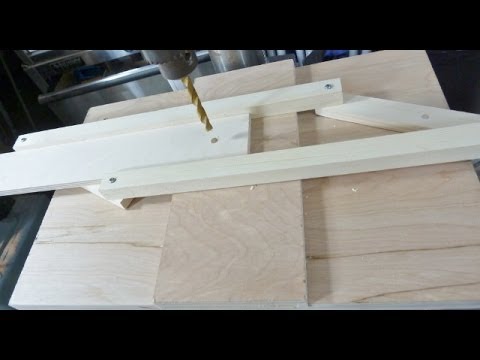A belt sander is a handy tool for woodworking and if it can sit in a stand it is even better. If you don't have the room or budget for many machines this sander may be right for you. It is fun when you can make your own woodworking tools and even better when you can build something that functions well.

This will be an easy build and does not require a lot of hardware. The sander can easily be put in or taken out of the stand and will be able to sit flat, upright and on the side.
To start I cut a base 7"x19". This would be the best size to fit my Makita beltsander. Other sanders would have to be measured individually. I measured the width of the sander and added 1/4 inch on each side and for the length I made it long enough so the sawdust bag would fit.
Two pieces of plywood 4x3/16" x 7" are glued together to make the front of the stand. They are offset by the thickness of the base board. Later one end will be cut to the height of the sander as you can see in the next photo.
A mark is made on the front board the same height as the sander's handle. This will be for a wood handle to lock onto the belt sander handle.
A couple of holes are drilled to make a slot for the handle. Draw 2 lines from the circles and then a jigsaw can be used to finish cutting the slot.
With my new caliper I measured the height of the sander on the base, this measurement will be used to help build the sides.
This is the shape I came up with for the sides. They are made this way so you can gain easy access to the switch with your hand. I rough sketched a few curved shapes until I liked what I had and cut them with the band saw.

Making the lever
Two pieces of hardwood are used to make this simple turn handle. A few holes are drilled, two in the support block and one in the handle.
The block is screwed onto the front board and the handle is attached with a pan head screw. It was able to swivel nicely and grip the sander handle firmly. Notice the slot length and position, it is made this way so the lever can swing 90 degrees.
A couple of blocks are attached to the base. They sit snug in the sander's handle and will give extra support for the sander. They are just screwed in from the bottom board.
The base, front, lever and sides are coming together. The last thing to do is add the top.
The top is screwed onto the sides using 4 drywall screws. The sander is not secured so it looks a bit crooked. Still a few adjustments have to be made.
The sander table is in the upright position, I was surprised how it sat on the table without any clamping. Next week we will see what happens when the tables are added and I give it a real test.
Conclusion
This is a conclusion for this part of the build. So far this is a very easy build. This sander table will get a lot of use in the shop. The lever makes it quick to put in and take out the sander.
The next part I will make the tables and some other modifications for the sander.
What kind of tools or machines have you made?
See Also:











































